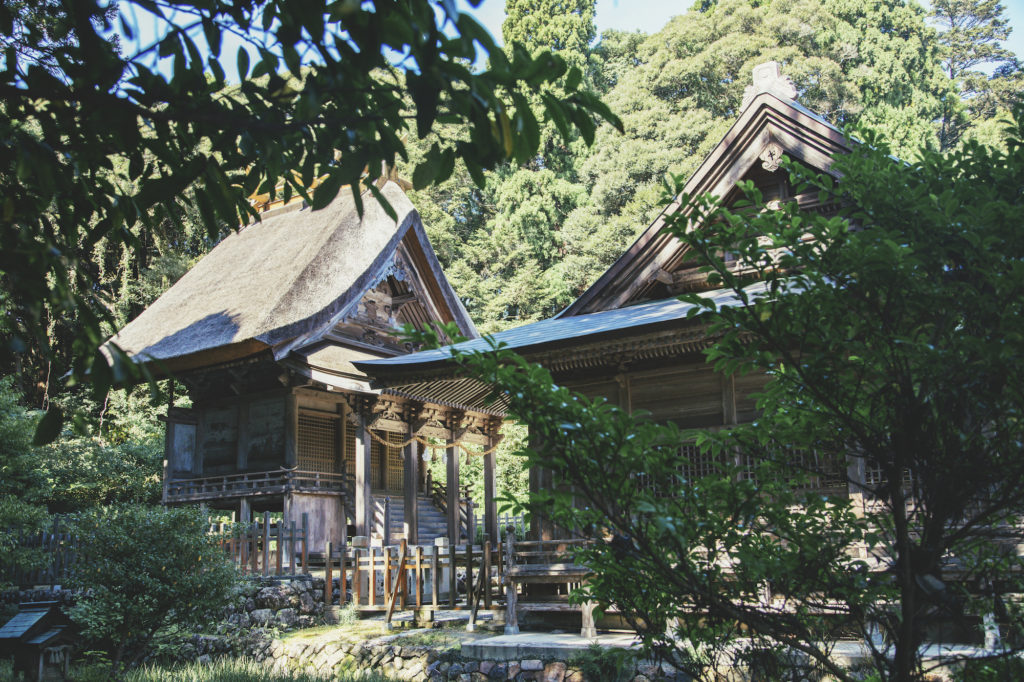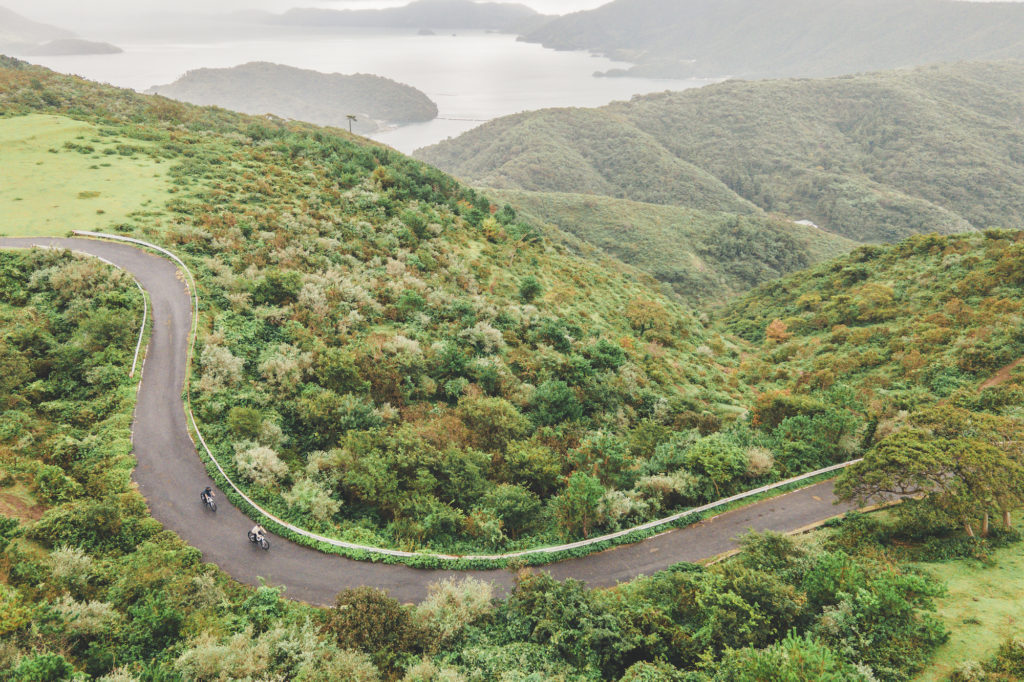The Mysterious Stone Islands
“The gravel on the road we just walked on contains minerals that are 3.2 billion years old.”
Our journey begins with these rousing words from Kazuhiro Nobe, Secretary General of the Oki UNESCO Global Geopark Promotion Council. A five-minute drive from the airport, our first stop is the Cape Saigo Lighthouse, where the first domestically produced 4th class Fresnel lens is still in use. “Oki is a hodgepodge of various terrains and geological formations that straddle the centuries, including volcanic rocks that only appear in Antarctica and Mount Kenya, and alkaline rocks common in the Mediterranean. There are even upwellings of the earth’s mantle, the very core of the earth. By examining Oki, we can understand the evolution of the earth’s land and the origins of Japan. However, we still don’t know why some of these geological formations are here, which is what makes them so mysterious and interesting.”
We find ourselves increasingly drawn in by Mr. Nobe’s enthusiasm, as he recounts the charms of his hometown. Aside from the unique geology, the diversity of flora and fauna is also unparalleled, with flowers that are supposed to grow at an altitude of 1,000 meters blooming along the coast, and trees from Hokkaido and grasses from Okinawa mixed together. This is apparently related to climatic changes over the past several hundred thousand years and the roots of Oki’s geological movements through the centuries.
Oki once thrived as a major producer of obsidian, and the stone was transported to Niigata and Shikoku as far back as 30,000 years ago. The historical fact of the name “Oki” being mentioned at the beginning of Kojiki and Nihonshoki (Chronicles of Japan) demonstrates how important the obsidian of this island was to the lives of the people at that time. In this way, the rocks of Oki silently and eloquently speak of the history and culture of the island and the mysteries of the earth.

In 2013, the Oki Islands were recognized as a UNESCO Global Geopark due to the value of its international geological resources. We opted for e-bikes to navigate the islands, which are decidedly rugged and have deep remnants of volcanic eruptions. E-bikes can be conveniently rented at all four ports in the archipelago and make it easy to ride uphill. Unlike driving, you can take in the scenery and lifestyle of the island at your own pace and feel the sea breeze on your skin.
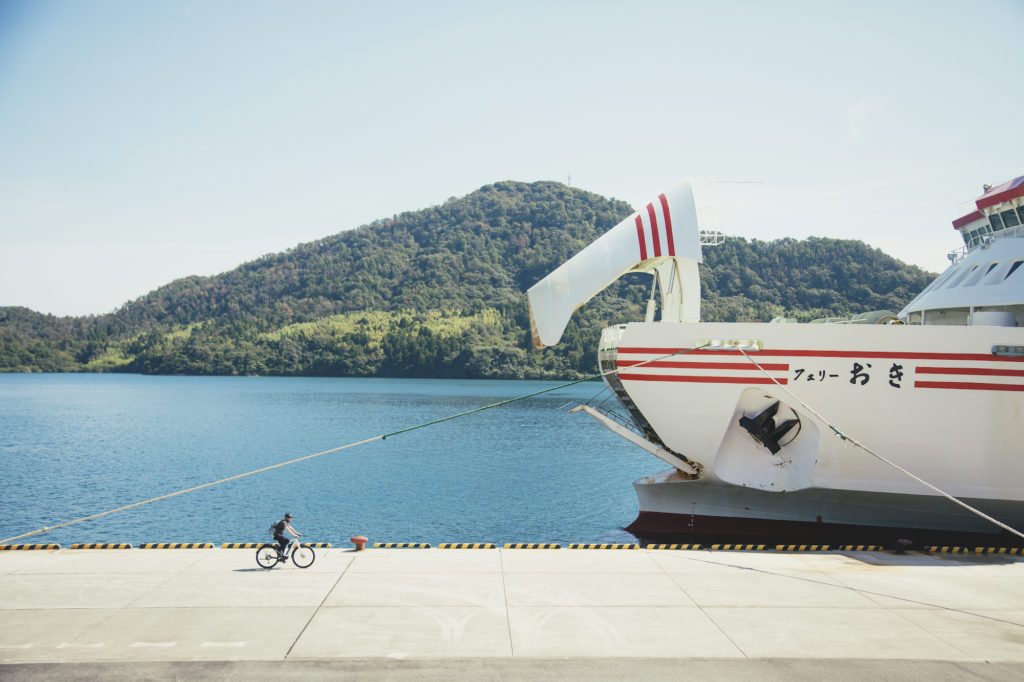
We set out on a perfect day for cycling. The green of the trees shines against the vast and clear blue sky. Our goal is to reach the northern tip of the island, the Shirashima coast. “You’ll see alkali rhyolite, a white geological island common in the Aegean and Western Europe.” Maruchan, a colleague of Mr. Nobe’s who accompanied us on this trip, kindles our travel spirits with his tidbits of information.
The view from the observatory was every bit as spectacular as we anticipated. Tens of thousands of years of rain, rough waves, and northwesterly winds have carved out an eroded landscape of pure white islets, elegantly nestled within the emerald, green sea. This is Japan, but if the geology is the same, what exactly is the difference between the scenery on the other side of the world? The spectacular scenery reminds us that there are no such thing as national borders, and that the present day indeed connects to 250 million years ago, when the world was still a single supercontinent. Oki’s story is vast in its scale.
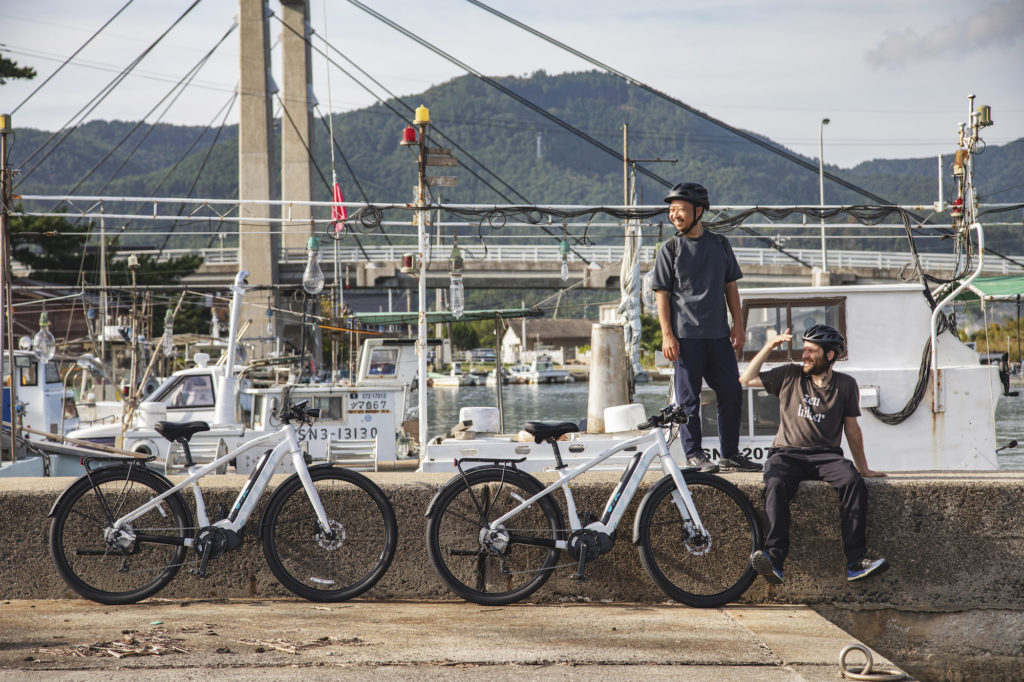
The island boasts many scenic spots. While Dōgo has the Shirashima coast, Dōzen has the Kuniga coast. We hop on a high-speed boat from Saigo Port to Nishinoshima Island, a mere 40 minutes. The depth of nostalgia for travel in Oki lies not in one island, but rather in the proximity of the four islands.
“When written in English, we tend to say “Oki Islands” with an “s” to indicate plurality. The four Oki islands are one.”
These are the words of Mr. Katsushi Moriyama, the owner of Sailing Coffee, the only one in Nishinoshima. He is an old pal of Papersky Editor, Lucas. In a previous life he worked in Tokyo as a planner/producer/designer, but since his student days has been involved in the promotion of his father’s hometown, Nishinoshima, and finally decided to put down roots here. The name of his coffee stand was inspired by the historical maritime culture of Oki and as a tribute to the way of life of a couple who traveled all the way from Holland on a yacht. The interior has the warmth of an old house, with various artworks and Eames chairs on display. “I thought it could be a part of the lovely scenery of Urago”(a town in Nishinojima.) He is now open every day of the year – even during the Bon and New Year’s holidays – so that customers can enjoy a cup anytime. His coffee stand brings delight to both islanders and travelers alike.

After a coffee break, we jump back on our e-bikes. Coming through the Kuniga tunnel, our eyes are met by a most unique scene; a cow, stood in the middle of the road.
“The area from here on out is where cattle and horses graze,” Maru-chan informs us. Oki, with its base of volcanic rock, traditionally had a lot of barren land. This paved the way for the development of a farming method known as Makihata. By partitioning the land into several areas and rotating the grazing cattle and horses seasonally, the weeds become food and natural fertilizer spread to fertilize the land. Although Makihata farming has faded out in recent years, the tradition of grazing handed down for 400 years continues. This landscape of cattle and horses strolling through steep mountainous terrain has not changed since the opening of the Edo Shogunate. Cycling in Iki is like entering a time warp.
It is definitely worth the effort to come all the way to this remote island to witness the dramatic scenery of the 7km-long Kuniga Coast, including the huge rock stone bridge at the foot of the cliff. The view from the top of the 257m high Matengai (“skyscraper”) cliff that is synonymous with Nishinoshima, is superb. Seems like it’ll be an hour-long trail to the Tsuten-kyo Bridge. How decadent, to be able to stroll while appreciating nature’s art on a planetary scale.
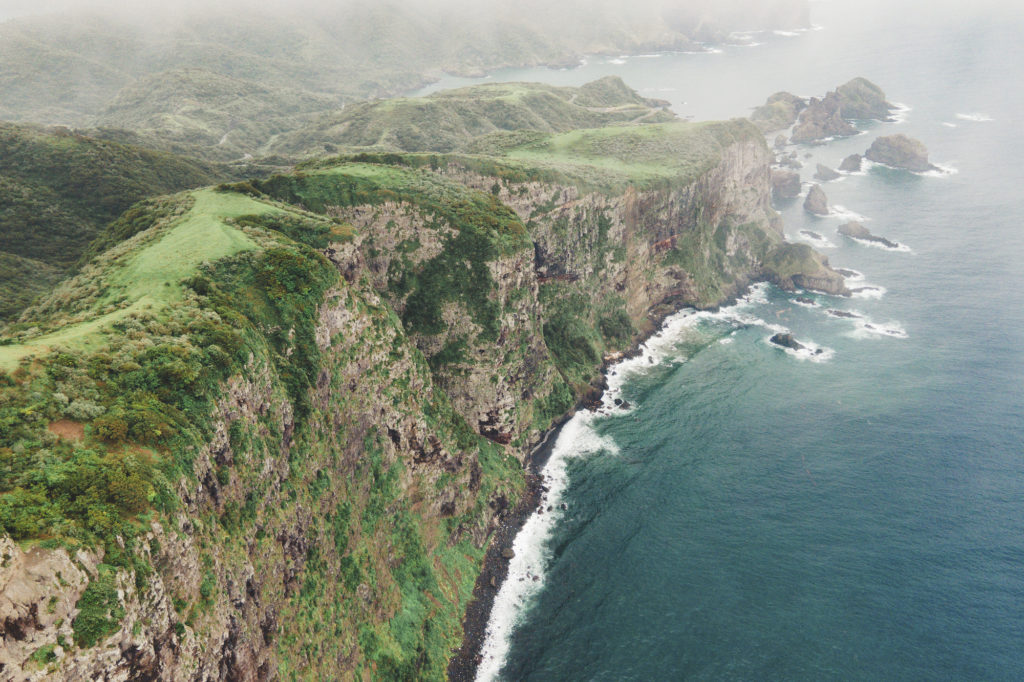
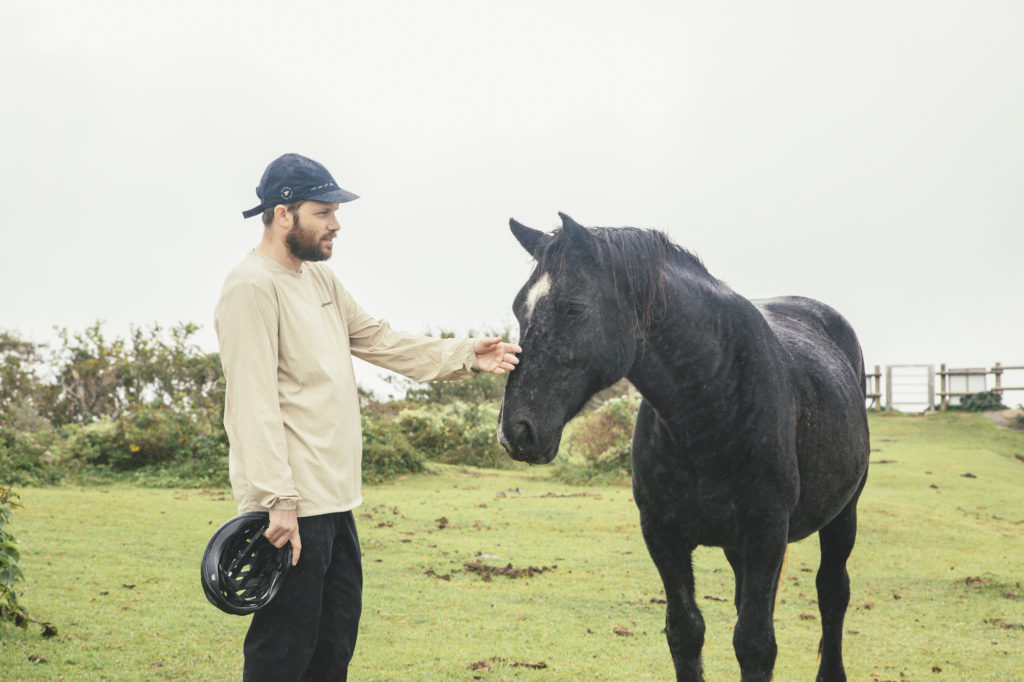
Bidding farewell to Nishinoshima, we head for Nakanoshima. As we pass through the port town, I feel a hankering for the sight of rice paddies, that idyllic rural landscape so ubiquitous in Japan. Oki has very little flat terrain and very limited land suitable for rice cultivation and arriving in Nishinoshima I could keenly sense that there was no land available for farming. However, thanks to the benefits of obsidian, pastoral agriculture, and fishing, life on the island seems to have been generally prosperous. This in borne out in the fact that it was once a place of exile for Emperors Go-Toba and Go-Daigo. In the past, it was standard practice to choose an island where people in power could live a contented life so that they would not be disgruntled and attempt to rebel. Even so, while Emperor Go-Daigo quickly exited the island after a year or so and raised an army to defeat the shogunate, Emperor Go-Toba saw out the rest of his days in Oki. The archipelago’s 800-year-old bullfighting festival is also said to have started to entertain the emperor.
After checking out the places associated with the Emperors and the Akiya coast, which draws in snorkelers and campers in summer, we headed back to Dōgo. Including over 100 shrines, Oki has many more intriguing spots tied to its history. Now, where to next? Becoming completely fascinated with Oki, we unfolded the map again.
